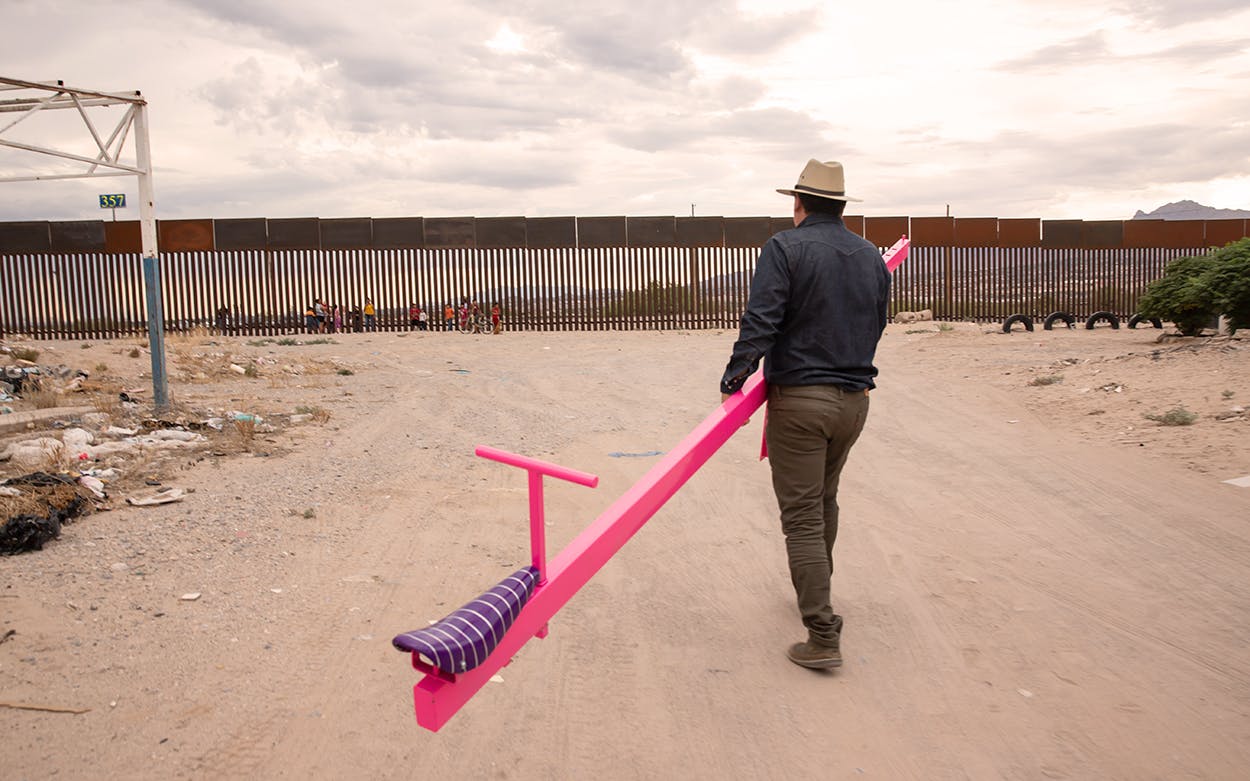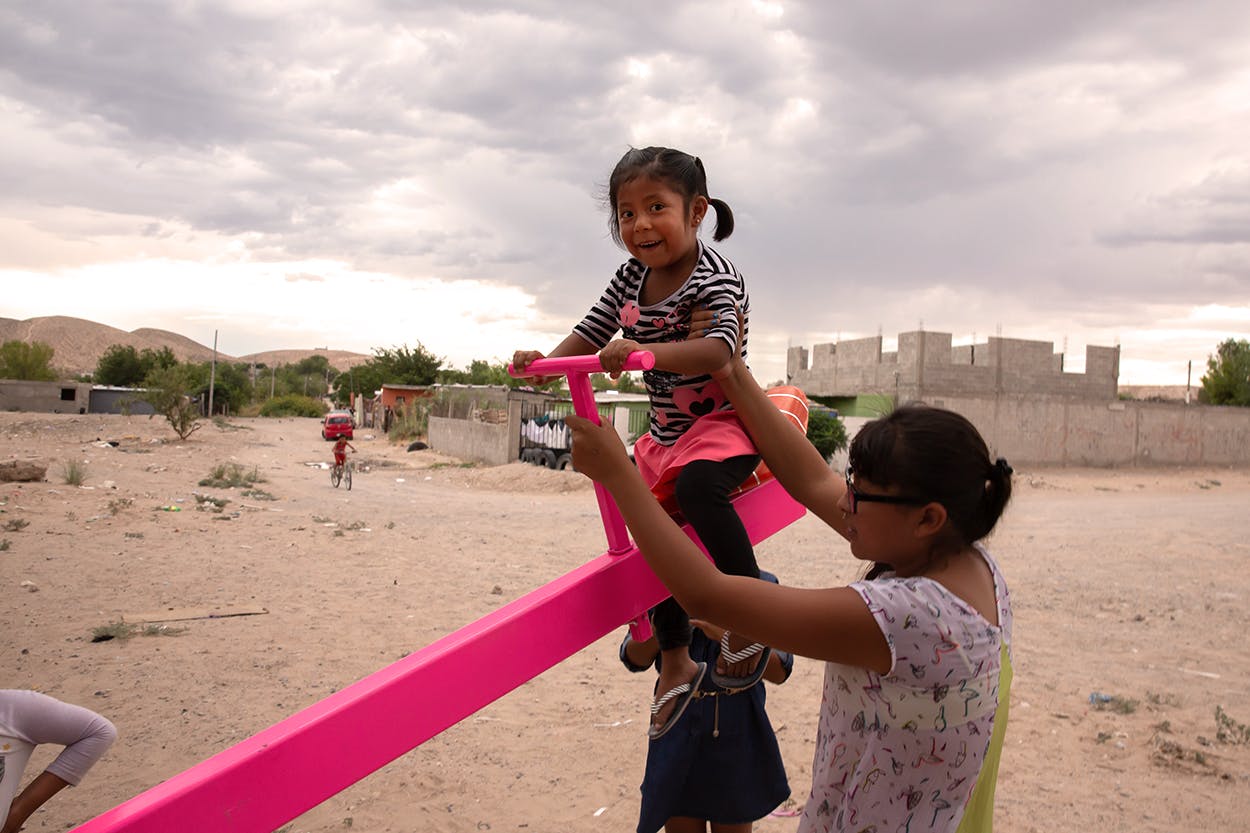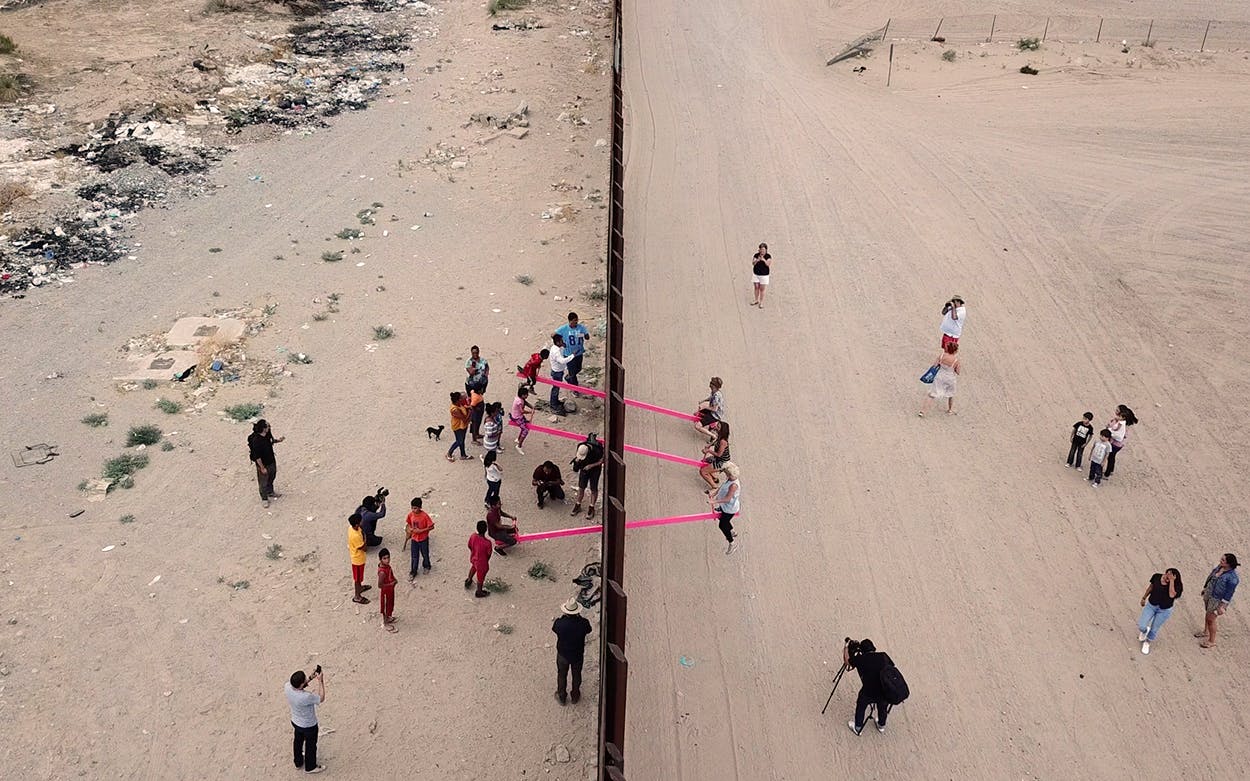Nine miles northwest of El Paso, a stretch of eighteen-foot-tall slats form the border wall between the United States and Mexico. In the last year alone, the site—located in Sunland Park, New Mexico—is where a group of armed vigilantes detained roughly three hundred migrants, where a crowdsourced wall went up on private land, and where a group of Trump supporters formed a human chain while chanting “build the wall.”
But in between each of the upright steel posts lie small gaps—just a few inches apart—where beautiful things have happened, too. Through those slats you can see children in Puerto de Anapra, Mexico, playing together. Families reunite there, and, on Sunday, three Pepto-Bismol-pink seesaws snugly fit into the wall allowed strangers on either side of the U.S.–Mexico border to come together.
The temporary art piece was the brainchild of California-based architects Virginia San Fratello and Ronald Rael (who helped design Prada Marfa). They originally dreamed it up ten years ago, in response to the passage of the Secure Fence Act of 2006. The duo then began a project that imagined different ways to subvert the meaning of a border wall and its implications. If the border wall acted as a stomping ground for political theater, for instance, then they might put up a screen on both sides and invite an audience to watch. If the wall was being used as an instrument of division, then they would turn it into a xylophone that could be played.
When they decided to approach the project again in January of this year, they decided that their 2009 idea (aptly named the “Teeter-totter Wall,”) would be the easiest to pull off. To make it happen, they collaborated with the architectural group Colectivo Chopeke and steelworkers in Ciudad Juárez to build the materials. When the team drove out to Sunland Park this past weekend, they didn’t ask permission, nor did they tell any news outlets. They just did it.

“It was intended to be a very humble event,” Rael says. “We just wanted to test what it meant to bring people together along the border through design.”
Whatever their intentions, the idea blew up. Since Sunday, Rael and San Fratello have been inundated with emails and calls, and Rael’s original Instagram post of the event has been viewed more than 200,000 times.
When they originally came up with the idea a decade ago, conversations surrounding the border were ongoing—though it was well before family separations and immigrants locked in cages were part of the national narrative. So, amidst continued reports that separations are still taking place, the duo decided it was time to test the waters with their creation.
“For anyone who wasn’t directly affected by it, it seems like the wall was largely invisible until Donald Trump was campaigning,” Rael says. “Trump claimed he was going to build a wall as if one didn’t already exist. This [installation] was a much-needed recognition of what a wall does to communities on either side. I think this resonated in people’s hearts and showed the importance of humanity along the border.”
For generations, Rael and his family have called the borderlands their home. Raised in the San Luis Valley of Colorado, at the headwaters of the Rio Grande, he can trace his lineage back to before the state was a part of Mexico. Over generations, he saw how the policies involving the border and the arbitrary line drawn between the two countries left scars that could still be felt today.

“I’m indigenous to this landscape,” Rael says. “The land that my ancestors occupied for generations has a cultural memory that still lingers today. We are constantly moving between two cultures, two languages.”
The landscape has informed his art, and caused him to think about architecture differently. Everything, from location to color to material, has an effect on the way people interact with structures. So when Rael and San Fratello set out to create the seesaws, it wasn’t just a rebellion against the division that the border wall creates. It also became a metaphor for the direct consequences that actions on one side have on the other.
Beyond that, the bright pink color sent a pointed message too. In Ciudad Juárez, that shade of pink is instantly recognizable as the one memorializing the estimated 1,500 women who have gone missing or been murdered since 1993. “We wanted to show the duality of the joy and sorrow in this innocent act of play,” Rael says.
Following the success of the installation (which they took down the same day), Rael and San Fratello are committed to continuing their project. Moving forward, they want to question the impact the existing wall has already had. “The construction of a wall dehumanizes a population,” Rael says. “When we cut people off from neighbors or from communities, and when we damage the environment, it comes with consequences. We’re going to have to reckon with that. We want to help transform the borderlands into a place where we can heal the scars that the wall has produced.”
- More About:
- Art
- Border Wall








